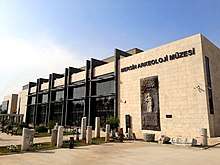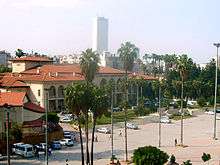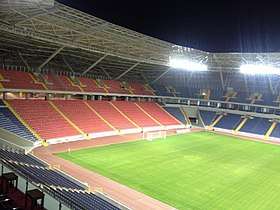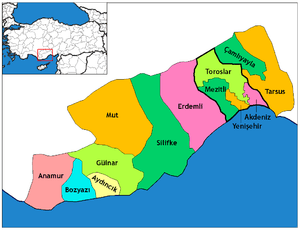Mersin
Mersin (pronounced [ˈmæɾsin]) is a large city and a port on the Mediterranean coast of southern Turkey. It is part of an interurban agglomeration, the Adana-Mersin Metropolitan Area, and lies on the western part of Çukurova, a geographical, economic and cultural region. The city was named after the aromatic plant Myrsine (Greek: Μυρσίνη) in the family Primulaceae, a myrtle that grows in abundance in the area (Turkish: mersin); the 17th-century traveler Evliya Çelebi wrote that there was also a clan named Mersinoğulları.[2]
Mersin | |
|---|---|
Mersin Yenişehir shore to west | |
 Mersin Location of Mersin within Turkey  Mersin Mersin (Europe) | |
| Coordinates: 36°48′N 34°38′E | |
| Country | |
| Region | Mediterranean |
| Province | Mersin |
| Government | |
| • Mayor | Vahap Seçer (CHP) |
| Elevation | 10 m (30 ft) |
| Population (2014)[1] | |
| • Total | 955,106 |
| Time zone | UTC+3 (FET) |
| Postal code | 33XXX |
| Area code(s) | (+90) 324 Metropolitan Municipality |
| Licence plate | 33 |
| Website | Mersin |
Mersin is an important hub of Turkey's economy, and Turkey's largest seaport is located in the city. Mersin's nickname in Turkey is "Pearl of the Mediterranean" (Turkish: Akdeniz'in İncisi), and the city hosted the 2013 Mediterranean Games. Mersin is the provincial capital of the eponymous Mersin Province of Turkey.
As of 2014, the city's population was 955,106.[1]
History
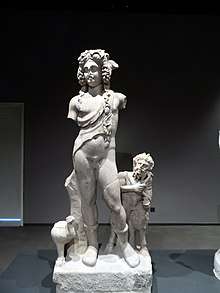
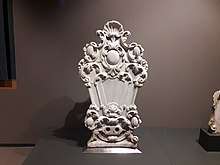
This coast has been inhabited since the 9th millennium BC. Excavations by John Garstang of the hill of Yumuktepe have revealed 23 levels of occupation, the earliest dating from ca. 6300 BC. Fortifications were put up around 4500 BC, but the site appears to have been abandoned between 350 BC and 300 BC.
In subsequent centuries, the city became a part of many states and civilizations including the Hittites, Assyrians, Urartians, Persians, Greeks, Armenians, Seleucids and Lagids. During the Ancient Greek period, the city bore the name Zephyrion (Greek: Ζεφύριον[3]) and was mentioned by numerous ancient authors. Apart from its natural harbor and strategic position along the trade routes of southern Anatolia, the city profited from trade in molybdenum (white lead) from the neighbouring mines of Coreyra. Ancient sources attributed the best molybdenum to the city, which also minted its own coins.
The area later became a part of the Roman province of Cilicia, which had its capital at Tarsus, while nearby Mersin was the major port. The city, whose name was Latinized to Zephyrium, was renamed as Hadrianopolis in honor of the Roman emperor Hadrian.
After the death of the emperor Theodosius I in 395 and the subsequent permanent division of the Roman Empire, Mersin fell into what became the Byzantine Empire.
The city was an episcopal see under the Patriarchate of Antioch. Le Quien names four bishops of Zephyrium:[4] Aerius, present at the First Council of Constantinople in 381; Zenobius, a Nestorian, the writer of a letter protesting the removal of Bishop Meletius of Mopsuestia by Patriarch John of Antioch (429–441); Hypatius, present at the Council of Chalcedon in 451; and Peter, at the Council in Trullo in 692. The bishopric is included in the Catholic Church's list of titular sees, but since the Second Vatican Council no new titular bishop of this Eastern see has been appointed.[5]
The area of Cilicia was conquered by the Arabs in the early 7th century, by which time it appears it was a deserted site. After them came the Egyptian Tulunids, the Byzantines between 965 and the 12th century, the Armenian Kingdom of Cilicia, Mamluks, Anatolian beyliks, and finally the city was conquered by the Ottomans from the Ramadanid Principality in 1473 and formally annexed by Selim I in 1517.
During the American Civil War, the region became a major supplier of cotton to make up for the high demand due to shortage. Railroads were extended to Mersin in 1866 from where cotton was exported by sea, and the city developed into a major trade center.
In 1909, Mersin's port hosted 645 steamships and 797,433 tons of goods. Before World War I, Mersin exported mainly sesame seeds, cottonseed, cakes and cereals, cotton, and livestock. Cotton was exported to Europe, grain to Turkey, and livestock to Egypt. Coal was the most prevalent import into Mersin at this time. Messageries Maritimes was the largest shipping line to use the port at Mersin.[6]
In 1918, Mersin was occupied by French and British troops in accordance with the Treaty of Sèvres. It was recovered by the Turkish army in 1921. In 1924, Mersin was made a province, and in 1933 Mersin and İçel provinces were joined to form the (greater Mersin) İçel province.
As of 1920, Mersin had five piers at its port, with one privately owned by a railroad company serving Mersin, Tarsus, and Adana.[7]
Climate
Mersin has a typical Mediterranean climate (Köppen climate classification: Csa), a type of subtropical climate with hot and dry summers and warm and wet winters. Mersin has its highest rainfall in winter; mainly December and January which gives Mersin its healthy, nurtured coastline. The driest months are summer with hardly any rainfall at all.
| Climate data for Mersin (1950–2015) | |||||||||||||
|---|---|---|---|---|---|---|---|---|---|---|---|---|---|
| Month | Jan | Feb | Mar | Apr | May | Jun | Jul | Aug | Sep | Oct | Nov | Dec | Year |
| Record high °C (°F) | 25.2 (77.4) |
26.5 (79.7) |
29.8 (85.6) |
34.7 (94.5) |
35.8 (96.4) |
38.2 (100.8) |
37.3 (99.1) |
39.8 (103.6) |
38.5 (101.3) |
36.4 (97.5) |
31.0 (87.8) |
27.0 (80.6) |
39.8 (103.6) |
| Average high °C (°F) | 14.7 (58.5) |
15.5 (59.9) |
18.2 (64.8) |
21.6 (70.9) |
24.8 (76.6) |
28.1 (82.6) |
30.7 (87.3) |
31.5 (88.7) |
30.0 (86.0) |
26.7 (80.1) |
21.4 (70.5) |
16.5 (61.7) |
23.3 (74.0) |
| Daily mean °C (°F) | 10.1 (50.2) |
10.9 (51.6) |
13.6 (56.5) |
17.5 (63.5) |
21.3 (70.3) |
25.2 (77.4) |
27.9 (82.2) |
28.3 (82.9) |
25.6 (78.1) |
21.1 (70.0) |
15.7 (60.3) |
11.7 (53.1) |
19.1 (66.3) |
| Average low °C (°F) | 6.3 (43.3) |
6.8 (44.2) |
9.2 (48.6) |
13.0 (55.4) |
16.8 (62.2) |
20.8 (69.4) |
23.9 (75.0) |
24.2 (75.6) |
20.9 (69.6) |
16.3 (61.3) |
11.4 (52.5) |
7.8 (46.0) |
14.8 (58.6) |
| Record low °C (°F) | −6.3 (20.7) |
−6.6 (20.1) |
−2.2 (28.0) |
0.6 (33.1) |
7.0 (44.6) |
5.3 (41.5) |
16.1 (61.0) |
15.0 (59.0) |
11.0 (51.8) |
2.7 (36.9) |
−0.8 (30.6) |
−3.0 (26.6) |
−6.6 (20.1) |
| Average precipitation mm (inches) | 112.9 (4.44) |
78.7 (3.10) |
56.4 (2.22) |
35.2 (1.39) |
23.6 (0.93) |
8.9 (0.35) |
7.6 (0.30) |
4.7 (0.19) |
8.5 (0.33) |
38.3 (1.51) |
78.6 (3.09) |
135.7 (5.34) |
589.1 (23.19) |
| Average rainy days | 10.1 | 9.2 | 7.6 | 6.8 | 5.2 | 2.2 | 0.9 | 0.8 | 1.7 | 5.0 | 6.8 | 10.62 | 66.92 |
| Mean monthly sunshine hours | 173.6 | 159.6 | 210.8 | 228 | 272.8 | 303 | 316.2 | 310 | 282 | 241.8 | 177 | 151.9 | 2,826.7 |
| Source: Devlet Meteoroloji İşleri Genel Müdürlüğü[8] | |||||||||||||
Mersin today
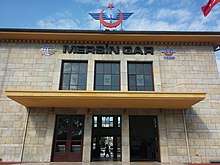
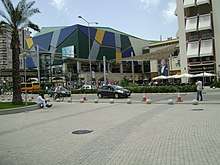
Today, Mersin is a large city spreading out along the coast, with skyscrapers, huge hotels, an opera house, expensive real estate near the sea or up in the hills, and many other modern urban amenities. The seaside of Mersin is the longest seaside in Turkey as well as in Eastern Mediterranean. The population of the city was 1,035,652 (Mersin Provinces 1,840,425) according to 2019 estimates. The population of the sub municipalities within Greater Mersin is shown below:[9]
| Name of the municipality | Population 2011 | Population 2013 |
|---|---|---|
| Akdeniz | 274,684 | 279,383 |
| Mezitli | 133,378 | 158,482 |
| Toroslar | 252,706 | 277,658 |
| Yenişehir | 198,912 | 224,995 |
The Metropolitan Municipality is now trying to rescue the sea front with walkways, parks and statues, and there are still palm trees on the roadsides especially where the young generation like to hang out in the cafés and patisseries of smart neighbourhoods such as Pozcu or Çamlıbel. These are established neighbourhoods where there are many well-known shops and restaurants with years of experience and reputations to protect. The city centre is a maze of narrow streets and arcades of little shops and cafes, with young people buzzing around on scooters. The old quarter near the fish market is where you will find the stalls selling tantuni and grilled liver sandwiches. The biggest shopping mall of the city, Forum Mersin is home to more than 100 shops[10] and attracts all kinds of people for shopping.
One of the most distinctive features of the city as a whole is the solar heating panels, they are everywhere, on top of every building.
Turkey now plans to construct its first nuclear power plant some 80 miles west of Mersin.[11] In March 2008, Turkey opened the bidding for the construction of the plant. Environmental groups, such as Greenpeace, oppose this plan.[11]
Cuisine
The local cuisine is famous, and restaurants specializing on the Mersin Cuisine can be found all over Turkey, and includes specialties such as:
- Ciğer kebap, (liver on mangal), typically served on lavaş with an assortment of meze at 12 skewers at a time,
- Tantuni, a hot lavaş wrap consisting of julienned lamb stir-fried on a sac on a hint of cottonseed oil,
- Bumbar, lamb intestines filled with a mixture of rice, meat and pistachios, that are served either grilled or steamed, famous throughout the Levant
- Cezerye, a lokum made of sweet carrots, covered in ground pistachios or coconuts,
- Karsambaç, peeled ice, (or even snow) served with a topping of pekmez or honey,
- Künefe, a wood-oven baked dessert based on a mixture of cheese and pastry; famous all throughout the Levant,
- Kerebiç, a shortbread filled with pistachio paste, also famous throughout the Levant,
- Şalgam suyu, a beverage made of fermented red carrots, very popular in Southern Turkey.
Economy and transportation
Historically, Mersin was a major producer of cottonseed oil.[12] The rural area around Mersin is famous for citrus and cotton production. Banana, olive and various fruits are also produced.
The port is the mainstay of Mersin's economy. There are 45 piers, a total port area of 785,000 square metres (194 acres), with a capacity of 6,000 ships per year.
Adjacent to the port is Mersin Free Zone established in 1986, the first free zone in Turkey, with warehouses, shops, assembly-disassembly, maintenance and engineering workshops, banking and insurance, packing-repacking, labelling and exhibition facilities. The zone is a publicly owned center for foreign investors, close to major markets in the (Middle East, North Africa, East and West Europe, Russian Federation and Central Asia. The trading volume of the free zone was USD 51.8 billion in 2002.
Mersin has highway connections to the north, east and west. Mersin is also connected to the southern railroad. Adana airport is 69 kilometres (43 mi).
Mersin port is an international hub for many vessels routing to European countries. It is now operated by PSA.
Mersin University
Mersin University was founded in 1992 and started teaching in 1993–1994, with 11 faculties, 6 schools and 9 vocational schools. The university has had about 10 thousand graduates, has broadened its current academic staff to more than 2,100 academicians, and enrolls 22,000 students.
Toros University, a non-profit private foundation university is also established in Mersin since 2009.
Culture
.jpg)
Because the city has been a crossroads for centuries, the local culture is a medley of civilizations. Mersin has a State Opera and Ballet, the fourth in Turkey after Istanbul, İzmir and Ankara. Mersin International Music Festival was established in 2001 and takes place every October. The photography associations Mersin Fotoğraf Derneği (MFD) and Mersin Olba Fotoğraf Derneği (MOF) are amongst the most popular and active cultural organizations in the city. Some cultural activities are sponsored by the İçel sanat kulübü (i.e. Art club of Mersin) and Mediterranean Opera and Ballet Club. There are six museums within the urban fabric; Mersin Museum, Mersin Atatürk Museum, Mersin Naval Museum, Mersin State Art and Sculpture Museum, Mersin Urban History Museum, Mersin Water Museum.
Some of the largest mosques include the Muğdat Mosque, built in the name of a companion of the Islamic prophet, Muhammad, Miqdad ibn Aswad, and the central Mersin Grand Mosque. The Old Mosque was built by Sultan Abdul Aziz in 1865 next to a foundation (vakıf).
The Mersin Interfaith Cemetery, sometimes also called Tolerance, is renowned for being a common cemetery of all religions. It includes graves of Muslims, Christians and Jews.[13][14]
The City hosts the Roman Catholic Co-Cathedral of St. Anthony of Padua.
In order to swim in clean water you need to get out of town, perhaps an hour along the coast. The beaches at Kızkalesi, Ayaş, Susanoğlu (app. 50–70 km west) are popular with families while young people prefer Akyar, Yapraklı koy, Narlıkuyu or quieter bays along the coast.
Sports
The city was formerly home to Mersin İdman Yurdu, a football club that played in the Süper Lig as recently as the 2015–16 season. The men's basketball team of the Mersin Büyükşehir Belediyesi S.K. plays in the Turkish Basketball League while its women's basketball team plays in the Turkish Women's Basketball League.
The city has two football stadiums: Mersin Arena, with a seating capacity of 25,534, and Tevfik Sırrı Gür Stadium, which has a capacity of 10,128. The men's and women's basketball teams of the Mersin Büyükşehir Belediyesi S.K. play their home matches at the Edip Buran Sport Hall, which has a seating capacity of 2,700.
Mersin hosted the 2013 Mediterranean Games. For this purpose, eleven new sports venues were built. The Servet Tazegül Arena, the fourth biggest indoor arena of Turkey with its 7,500 seating capacity, hosted the men's basketball events and the volleyball finals of the Games.[15] The athletics and paralympic athletics events were held at the Nevin Yanıt Athletics Complex.[16]
Mersin at night
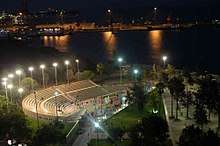 Mini Open Theatre
Mini Open Theatre- Mersin at night
 "Running Horses" Sculpture
"Running Horses" Sculpture Decorative Arch
Decorative Arch One of the fountains in Mersin
One of the fountains in Mersin Decorative Lake Set
Decorative Lake Set
International relations
Twin towns – sister cities
Mersin is twinned with:[17]







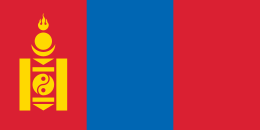



Notable people
- Evelyn Baghtcheban – one of the pioneers of opera and choral music in Iran
- Anton Christoforidis – NBA Light Heavyweight Champion
- Muazzez İlmiye Çığ – academic and writer
- Haldun Dormen – theatre & film actor and director
- Musa Eroğlu – composer, musician
- Uğur Ersoy – engineering academic
- Reşit Galip – former minister of National education
- Ahmet Mete Işıkara – scientist
- Müfide İlhan – first woman mayor in Turkey in the 1950s
- Gencay Kasapçı – painter
- Ahmet Kireççi (aka Mersinli Ahmet) – Olympic medalist wrestler
- Nevit Kodallı – composer
- Seyhan Kurt – poet, writer, sociologist
- Cemal Mersinli – a pasha of the Ottoman Empire
- İpek Ongun – writer
- Macit Özcan – former mayor
- Fikri Sağlar – former Minister of Culture
- Suna Tanaltay – writer and psychologist.
- Nevin Yanıt – female sprinter (European champion in 100 m hurdles)
- Atıf Yılmaz – film director and producer
- Ali Özveren - Founder of Mersin Education Foundation and Toros University
See also
- Adana-Mersin Metropolitan Area
- Çukurova
- Akdeniz, second level municipality of Mersin
- Mezitli, second level municipality of Mersin
- Toroslar, second level municipality of Mersin
- Yenişehir, second level municipality of Mersin
- Cilicia War
- Mersin Martyrs' Memorial
- Gözne
- Soli, Cilicia
- Yumuktepe
- Kazanlı
- Chronology of the Turkish War of Independence
- List of mayors of Mersin
- Atatürk Monument (Mersin)
- Mersin İdmanyurdu, football team of the city
- Gulf of Mersin
- Dikilitaş, Mersin
- Mersin Catholic Church
- Mersin Harbor
- Mersin railway station
- Mersin Halkevi
- Mertim
- Mersin Feneri
- Atatürk Parkı
- Mersin Museum
- Tırmıl
- Mersin Citrus Festival
- Radyo Çukurova
- Mersin Bus Station
References
Notes
- "Official Demographics from 2014". Mersin.gov.tr. Retrieved 4 May 2019.
- İçel: Mersin- Tarsus- Çamlıyayla- Erdemli- Silifke- Aydıncık- Bozyazı- Anamur- Gülnar- Mut (Kültür, Turizm ve Tanıtım yayınları, 1992), p. 7.
- Archived 2007-06-14 at Archive.today retrieved June 14, 2007
- Le Quien, Michel (1740). "Ecclesia Zephyrii". Oriens Christianus, in quatuor Patriarchatus digestus: quo exhibentur ecclesiæ, patriarchæ, cæterique præsules totius Orientis. Tomus secundus, in quo Illyricum Orientale ad Patriarchatum Constantinopolitanum pertinens, Patriarchatus Alexandrinus & Antiochenus, magnæque Chaldæorum & Jacobitarum Diœceses exponuntur (in Latin). Paris: Ex Typographia Regia. cols. 883–884. OCLC 955922747.
- Annuario Pontificio 2013 (Libreria Editrice Vaticana, 2013, ISBN 978-88-209-9070-1), p. 1012
- Prothero, G.W. (1920). Anatolia. London: H.M. Stationery Office.
- Prothero, G.W. (1920). Anatolia. London: H.M. Stationery Office.
- İl ve İlçelerimize Ait İstatistiki Veriler- Meteoroloji Genel Müdürlüğü
- [https://www.nufusu.com/il/mersin-nufusu Population page}}
- KINALI, Tuncay. "Mağazalar – Forum Mersin Alışveriş Merkezi". www.forummersin.com. Archived from the original on 2015-01-08. Retrieved 2016-03-05.
- Demonstration against nuclear power in Mersin Archived 2011-08-15 at the Wayback Machine Firat News agency
- Prothero, G.W. (1920). Anatolia. London: H.M. Stationery Office. p. 113.
- "Archived copy". Archived from the original on 2016-03-03. Retrieved 2014-07-25.CS1 maint: archived copy as title (link)
- GÜNGÖR, İZGİ (10 March 2008). "Not only bodies, but prejudices buried in Mersin Cemetery". Hurriyet Daily News. Retrieved 13 January 2014.
- "Mersin, Tesisleri ile Fark Yaratacak..." (in Turkish). Mersin 2013 XVII Akdeniz Oyunları. Archived from the original on 2013-05-07. Retrieved 2013-05-14.
- "Nevin Yanıt Atletizm Kompleksi" (in Turkish). 2013 Mersin XVII Akdeniz Oyunlatı. Archived from the original on 2013-05-12. Retrieved 2013-05-15.
- "Kardeş Şehirlerimiz". mersin.bel.tr (in Turkish). Mersin. Retrieved 2020-01-19.
- Blue Guide, Turkey, The Aegean and Mediterranean Coasts (ISBN 0-393-30489-2), pp. 556–557.
- Blood-Dark Track: A Family History (Granta Books) by Joseph O'Neill, contains a detailed and evocative history of the city, viewed from the perspective of a Christian Syrian family long resident in Mersin.
- Richard Talbert, Barrington Atlas of the Greek and Roman World, (ISBN 0-691-03169-X), p. 66

External links
| Wikivoyage has a travel guide for Mersin. |
| Wikisource has the text of the 1913 Catholic Encyclopedia article Zephyrium. |
| Wikimedia Commons has media related to Mersin. |
